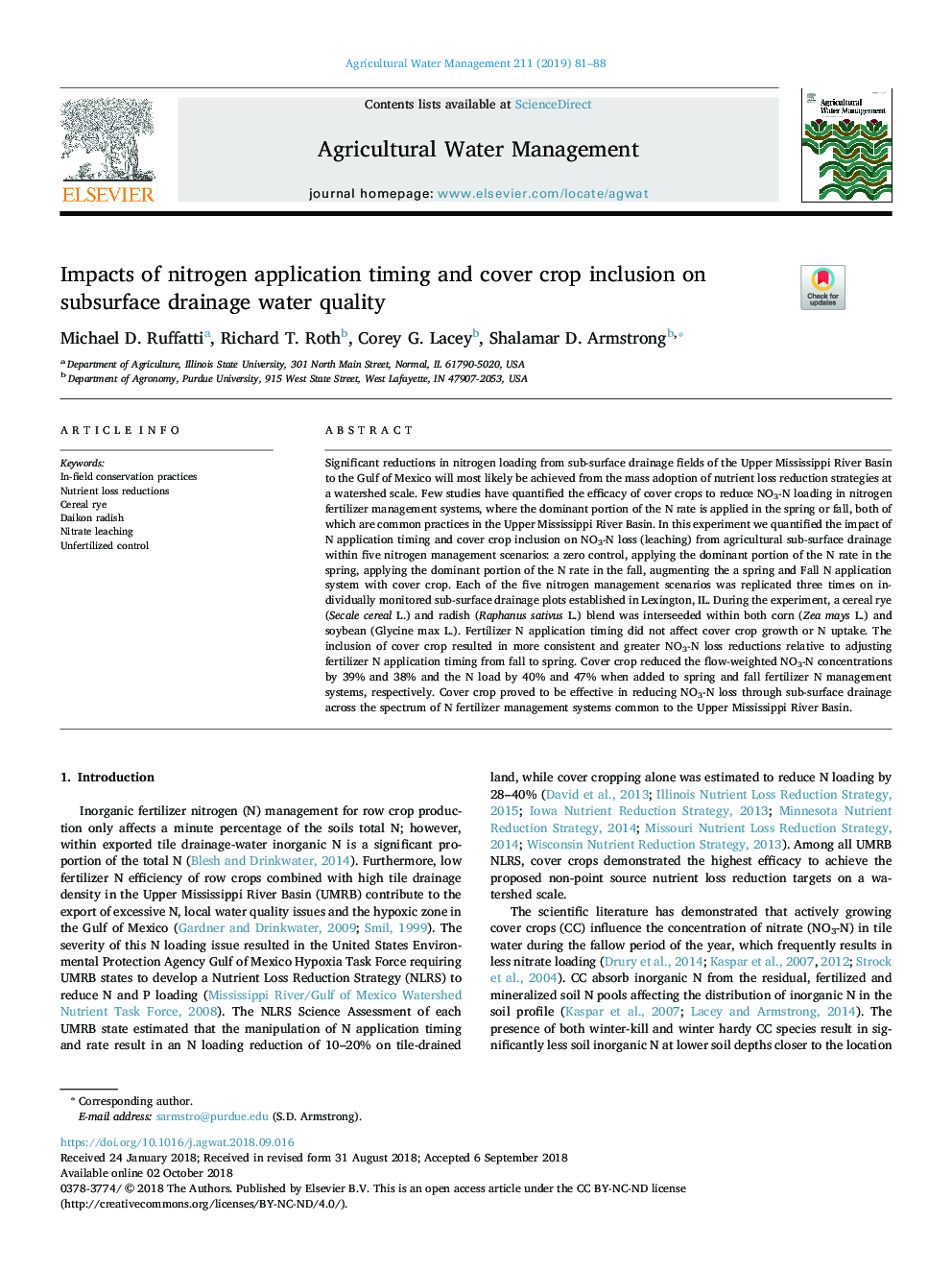| Article ID | Journal | Published Year | Pages | File Type |
|---|---|---|---|---|
| 11021750 | Agricultural Water Management | 2019 | 8 Pages |
Abstract
Significant reductions in nitrogen loading from sub-surface drainage fields of the Upper Mississippi River Basin to the Gulf of Mexico will most likely be achieved from the mass adoption of nutrient loss reduction strategies at a watershed scale. Few studies have quantified the efficacy of cover crops to reduce NO3-N loading in nitrogen fertilizer management systems, where the dominant portion of the N rate is applied in the spring or fall, both of which are common practices in the Upper Mississippi River Basin. In this experiment we quantified the impact of N application timing and cover crop inclusion on NO3-N loss (leaching) from agricultural sub-surface drainage within five nitrogen management scenarios: a zero control, applying the dominant portion of the N rate in the spring, applying the dominant portion of the N rate in the fall, augmenting the a spring and Fall N application system with cover crop. Each of the five nitrogen management scenarios was replicated three times on individually monitored sub-surface drainage plots established in Lexington, IL. During the experiment, a cereal rye (Secale cereal L.) and radish (Raphanus sativus L.) blend was interseeded within both corn (Zea mays L.) and soybean (Glycine max L.). Fertilizer N application timing did not affect cover crop growth or N uptake. The inclusion of cover crop resulted in more consistent and greater NO3-N loss reductions relative to adjusting fertilizer N application timing from fall to spring. Cover crop reduced the flow-weighted NO3-N concentrations by 39% and 38% and the N load by 40% and 47% when added to spring and fall fertilizer N management systems, respectively. Cover crop proved to be effective in reducing NO3-N loss through sub-surface drainage across the spectrum of N fertilizer management systems common to the Upper Mississippi River Basin.
Keywords
Related Topics
Life Sciences
Agricultural and Biological Sciences
Agronomy and Crop Science
Authors
Michael D. Ruffatti, Richard T. Roth, Corey G. Lacey, Shalamar D. Armstrong,
